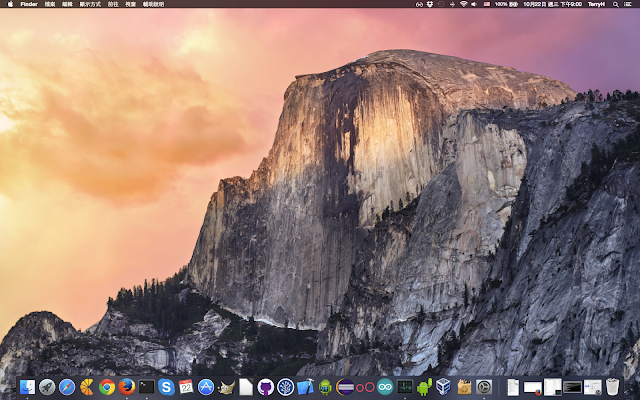新的工作,前幾天剛任職滿一個月
前幾個月心中浮出念頭,想換工作,就像馬雲說的,心委屈了,給的不到位
直到最後真的不想再承受的是,我真的由衷的喜歡寫程式,學新的東西,解決問題
後端用 Python, Node.js , 或是 Golang 去刻,也可以接受被叫去支援寫 Android
, iOS 的應用程式,可是 PHP Team 的工程師離職後,找不到人,找我去接專案,心中真的很圈圈叉叉
好歹我也是掛在 Python 的開發 Team 下面,應該在怎麼凹,也凹不到我吧!
喜歡寫程式,愛 Linux ,也尊重 Php 的工程師,寫過1, 2 年
可是無奈現在看到程式裡有很多的錢字號,真的要很多錢的工作職務,才吞的下去,尤其是人員的離職
就亂塞專案,心裡真的很不舒服,就是這樣的感覺,淹沒我工作的樂趣,及下班後,陪伴小孩,家人的幸福感,
開始認真的再看看有沒有適合的工作機會,這裡分享中年程式宅,換工作的心得,由幾個點來看找工作
這件事
最好的工作,一定是朋友介紹的,不過阿宅的朋友一般不多,所以自己拿捏一下
看工作說明及前置作業
1. 一般的說明,寫的很制式的,就不用投了,一間公司,連找人才這麼重要的事,都不在意了,相信也不太會重視你
2. 專業名詞,幾乎全部出現了,薪資待遇卻沒有空間,這投的話,只能說,自己的邏輯判斷都有問題了怎麼寫程式
3. 說明裡提到,克苦耐勞,新人尤佳,一般台灣的徵才有很多淺規則,要克苦耐勞的一定只有更苦,新人尤佳的
其實就是要應屆畢業的同學,說到歡迎抬青椒成的,就是只接受台青椒成 (外商不適用,真正的外商比較沒有這些規則)
4. 一般台灣企業,或是假外商的話,條件裡的 nice to have ,不用懷疑,就是一定要會,而且要很厲害
5. 新創公司,一般除了是自己認識的人外,一定要選成立一年以上的公司,一間連員工年終都沒發過的公司,你信任嗎?
6. 一般新創公司,徵才的文案寫的很漂亮,有一個陷阱是薪水的範圍給的很大,這種通常只是吸引你投履歷,一般給不起上限
(除非你有學長姊,或是認識的朋友在裡面任職,不過通常是好缺的話,不用寫到文案,履歷已經很多份,正送到人資主管手上了)
7. 大公司,有好學歷,比較有好機會,公司經營者越是學術界出身的越在意學歷,自然你學歷是強項,就很有機會出線,如果你是專業強,
學歷像我一樣,私立大學還非本科系,通常外商或是,專業強的老闆,會比較重視你
8. 一個工作一直在徵人,可能掛個一年以上,我是沒投過這樣的職務,你可以問看看,在告訴大家
9. 公司的經營者,名聲不好,或是人品不好,這個其實很主觀,就像選舉一樣,反正自己的選擇,我是不會考慮
10. 另外就是 Head hunter 及 Linkedin 提供的機會,一般會比一般人力銀行的條件好一些
進入面試過程,其實這是很主觀的事情,只能說,千奇百怪,什麼人都有
有些人,希望你的智力破表,人格正常,專業超強,充滿創造力及想像力,又要好管理,聽了是不是很矛盾 :-)
反正就是做自己,假如你找的是一份你本來就喜歡做的事,有問題就問,不能接受的就不要接受,
不必像一些面試法則說的那樣,溫文儒雅,有禮貌,懂規矩,少問問題,我們求得是一份快樂的工作,
工作開心,自然很期待每天上班,不是奴才的缺,每天痛苦的工作
如果想知道,新的工作環境,是不是責任制,或是一般的下班時間,就直接問,會因為這樣就在意的主管,
一般他也不是在意你的專業能力,而是在意對你的控制能力,也許教你面試的書,會說你失去了一的工作機會
其實是你又浪費了寶貴的時間在錯的地方
1. 一般面試官,會問的,有工作經驗,答的出來,知道多少就說多少,謙虛,不要唬爛,不要自以為是
2. 程式題,就盡量寫,不會寫,也還好,就說一下怎麼解,或是自己的了解,依您自己開發多年的經驗,你的成果應該都不是在紙上寫出來的吧!
一般程式題,我覺得是要過濾一些完全沒有概念的人用的,真的會用很艱深的程式問題或是演算法,來考倒你,我想這樣公司需要的是很會考試的同學
一般網路上,找的到的,或是書本有教的,查的到的,有概念,需要驗正及實作的時候,再專研即可,真正的工作,會有不同的挑戰,不見得書上找的到,
有時候,是真的花比較多時間在看文件,及實作
3. 一般回答完面試官所有問題後,會給你提問,如果你真的是會不好意思,我也是會有一點,我至少問
a. 公司一般作息時間,是不是責任制 ( 一般會要你加班工作的主管,聽到你這樣問,也會打你槍,不過是好事)
b. 公司有沒有不同於勞基法以外特別的規定
c. 問面試官,現在任職的公司服務,最令他覺得驕傲,自豪的點,還有最不舒服的點 (說不出來,或是吱吱嗚嗚,自己都說不出為什麼要做下去,又怎麼能要你加入,大概就可以打槍這一間公司不用再往下談了)
d. 公司成家的工程師的比例,及一間公司工程師的比例 (一般,日夜都忙的工作,沒有時間交女友,或是生活只有工作,沒有一點其他的生活,又有誰要跟他共組家庭)
最後階段,公司覺得你是不可多得的人才,談薪資及 package
1. 如果是要離開台灣,記得要依照,實際國家水準,不要用台灣的角度看
2. 千萬不要相信人力銀行上面的數據,用你簡單的數學,如果,不吃不喝,買不起房子的薪水,哪就不要做了,出國吧
3. 至少相信自己的專業,在 odesk 上面可以拿的到的時薪,稍微還原一下,就可以推出一個正常的無國界工作者的基本價值,不然就開始接案人生吧 ;-)
4. 在自己真正有實力的基礎下(不是自我感覺良好),至少,你覺得爽,覺得夠,不然又會墜入心理的糾結 (最好可以跟學長姊,或是同業的朋友打聽一下,不要看人力銀行的數據)
以上自己的心得分享,希望對您有幫助
golang routers
覺得簡單易懂的好文章
可以讓你用 golang 寫 api 有一個簡單的開始
http://nicolasmerouze.com/guide-routers-golang/
另外也推薦他的 gist ,再把 main 的部份,拔出來,做一個 NewRouter 應該更好測試,再加幾個函式庫,就是一個 micro framework 了
作者這一系列的文章 http://nicolasmerouze.com/build-web-framework-golang/
相關也推再看 alice 模組作者的文章,雖然 alice 很單純,單純到自己刻,可能也只有 5 行左右
不過看一下,作者的實作概念,挺不錯的
https://justinas.org/alice-painless-middleware-chaining-for-go/
https://github.com/justinas/alice
https://github.com/julienschmidt/httprouter
https://github.com/gorilla/context
vim paste
網路上大大分享的 vim 技巧
可以自動 toggle paste 模式,我還真的就是那種,要貼
就 toggle 一下的人,果然,懶,才是進步的原動力
http://blog.longwin.com.tw/2014/12/vim-linux-mac-putty-paste-mode-change-2014/
原始來源
http://stackoverflow.com/questions/5585129/pasting-code-into-terminal-window-into-vim-on-mac-os-x/7053522#7053522
為什麼不要買三爽的手機
目前的手機 S3 ,終於也到的系統崩潰的時候了
到官方網站,要抓 firmware ,結果完全找不到
反而要由第三方的網站,才找的到載點
手機可以繼續故障下去
這是我第三次修理了,前兩次,都是 micro USB 接頭有問題,解法都要我換主機板
第一次,保固內,第二次,過保了一個月,我想他們手機的耐久壽命,可能只有抓
保固期的 0.9 ~ 0.98
這一次,開不了機了
Yosemite 的痛
我想 Mac Yosemite 的痛,大家漸漸感受到了
這裏有一篇,有關無線網路爛了的解法,有問題的朋友可以試試,我的 WL-330nul 一樣是沒有用,只能用斷斷續續的 Ap 模式
感覺回到了用 Linux 時的初衷,還會邊拔插裝置,tail -f 看一下 /var/log/system.log 的錯誤
http://osxdaily.com/2014/10/25/fix-wi-fi-problems-os-x-yosemite/
還有一種方法,就是把藍芽關掉,再試試看
另外,Yosemite 已經預設不讓你裝沒有簽證過的 kernel module 了,所以用 homebrew 要裝 osxfuse 會吐
terry@localhost /var/log $ brew install osxfuse
osxfuse: osxfuse is already installed from the binary distribution and
conflicts with this formula.
osxfuse: OS X Mavericks or older is required for this package.
OS X Yosemite introduced a strict unsigned kext ban which breaks this package.
You should remove this package from your system and attempt to find upstream
binaries to use instead.
Error: Unsatisified requirements failed this build.
我是直接下載 dmg 安裝了
Write in GO
優勝美地不太優
筆記一下 Fragment
在 twitter 上面,看到前輩分享 有關於 Android Fragment
的一些問題
http://corner.squareup.com/2014/10/advocating-against-android-fragments.html
Android 和 iOS 不同點
這真的要靠背一下,為什麼很少聽人說, Android 用 micro usb 基本上是設計有問題壓
iPhone 上面的插座,是母,線是公的,會聽到有人,有時候說線很爛,常斷之類的
可是 Android 上面的傳輸插座 micro usb 是母的,也是公的,中間那一個小插片,倒是線的接頭耐用多了,這一種設計
會斷,就是斷在手機的插座上,這根本就是做錯的東西吧
就是古典 Android App 發佈
Google Play 連結
https://play.google.com/store/apps/details?id=com.upassing.justclassic
這是一個專為古典樂做的 App.
所有的內容來源,都是屬於公共領域的音樂,小弟還蠻喜歡開放音樂,商業的創作也喜歡,只是,自由音樂在法律上,不會像商業的音樂全被唱片公司控制
未來如果真的有人喜歡自由開放的古典音樂,我會繼續改善這一個 App,也會加上廣告,以維持下載的頻寬
如果想要鼓勵我,繼續改善這一個 App,給個五顆星,還有您寶貴的建議,目前是非常 beta 的版本,基於 release early release often 的原則就先發佈了
最重要的就是一起聽音樂吧
這一次,寫這一個 Android 的心得,就是 IDE (Android Studio) 的開發環境,真的很聰明,自己不會寫 Android
以前比較多是用 cordova 包的 App , Java 的書也都沒 K 過,居然能發佈 very early beta release 的版本,還有很多的調教優化要邊做邊學
現在寫 Python Golang Node.js 的時候,用 Vim 寫,也都會一大堆提示,及提醒
Golang 裡面左括弧,寫成了冒號
Python 裏冒號變成左括弧
javascript 裏 for loop 寫成 Python 或是 Golang 的樣式
Golang 裏用了 Java for loop 的語法
這些全靠 Vim 或是 IDE 幫我檢查,以後要是有機會去面試,要是用筆寫程式,不能用我的電腦,應該會死的很慘 ;-)
PS: 給宅爸在家就是都會做一些怪怪的東西
參考資料
http://code.tutsplus.com/tutorials/create-a-music-player-on-android-user-controls--mobile-22787
